Top 10 Affordable Studio Microphones
Quick Answer
- Audio-Technica ATM450 Small-diaphragm Condenser Microphone
- Miktek PM10
- Neumann TLM 102 Large-diaphragm Condenser Microphone
- sE Electronics X1 A Large-diaphragm Condenser Microphone
- Shure 545SD Dynamic Instrument Microphone
- Audio-Technica AT4050 Large-diaphragm Condenser Microphone
- Lauten Audio LA-320 Large-diaphragm Tube Condenser Microphone
- Shure Beta 91A Condenser Boundary Microphone
- Neumann BCM 104 Cardioid Broadcast Microphone
- Shure SM81 Small-diaphragm Condenser Microphone
Top 10 Affordable Studio Microphones in Detail
What makes a great studio microphone? Is it the price tag, or the flexibility - the impressiveness or the technical specifications?
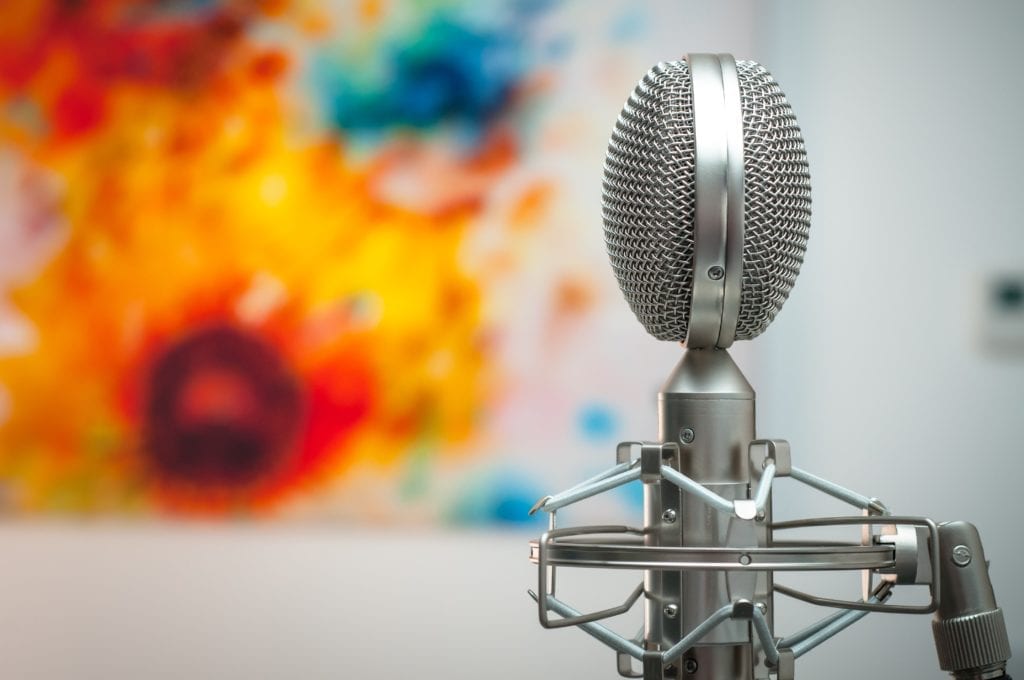
Many factors go into making a great microphone.
In truth, it’s a little bit of everything. A great studio microphone is one that sounds great on various instruments and sound sources, giving the engineer multiple options for recording, while introducing minimal noise and other unwanted artifacts.
With that in mind, let’s look at some of the best affordable studio microphones. Some of the microphones listed will be more suited for certain instruments like drums or vocals, whereas some will be more versatile, but all offer uncompromising quality and the utmost excellence in sonic quality.

All of the microphones on this list offer exceptional audio quality at a reasonable price.
If you’re looking for a new microphone or various microphones to add to your collection, you can’t go wrong with any of the ones listed here.
If you’ve been working on recording a project, and you’re at the mastering stage or looking for a reliable and affordable engineer, send us your mix here:
We’ll master it for you and send you a free mastered sample for you to review.
10. Audio-Technica ATM450 Small-diaphragm Condenser Microphone
Current Price - $279.00 USD
The point of any small diaphragm condenser is that it can be used as a pair. Granted, there are enough applications for just one of these microphones, but a great small diaphragm microphone needs to be affordable enough to afford two.

The ATM450 is affordable enough to purchase a pair.
The Audio-Technica ATM450 checks this box at a reasonable price point. Additionally, it offers a good signal-to-ratio with fantastic sonic quality and detail.
Whether you use it on a snare, as drum overheads as a spaced pair or maybe in a Glyn Johns formation, or maybe to create a stereo imaged acoustic guitar, this small-diaphragm microphone captures the detail you want, while being durable enough to survive a whack from an aggressive drummer.
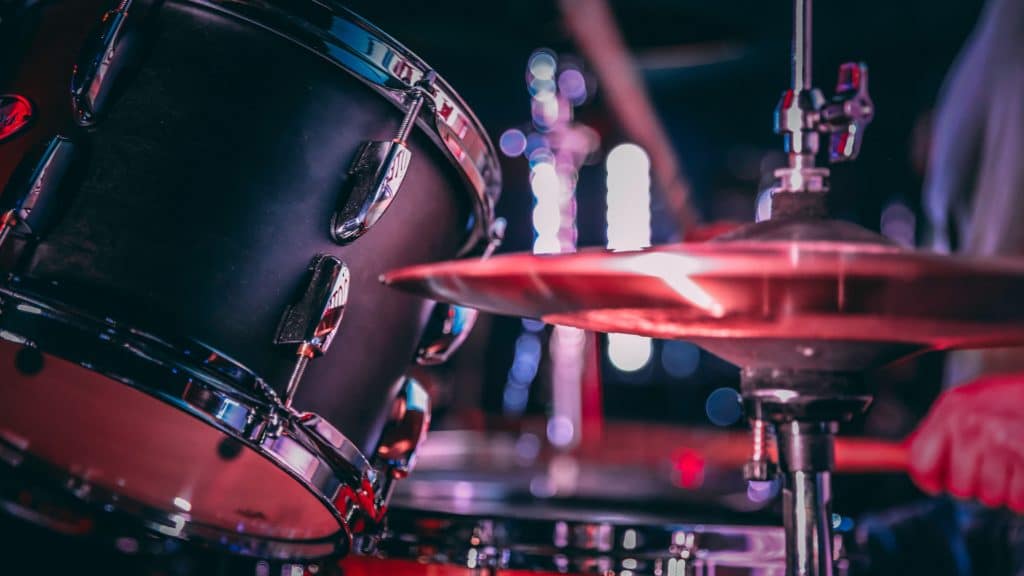
The ATM450 is a great option for drum overheads or for close-mic applications.
Try a pair out for yourself and see the difference a pair of great small-diaphragm condensers can make in your studio.
9. Miktek PM10
Current Price - $199.00 USD
Sometimes throwing the usual SM57 on a tom or snare and calling it a day doesn’t do a drum set justice. Of course, the 57 is a classic, but having a microphone specifically designed to capture the transient of a drum can make all the difference.
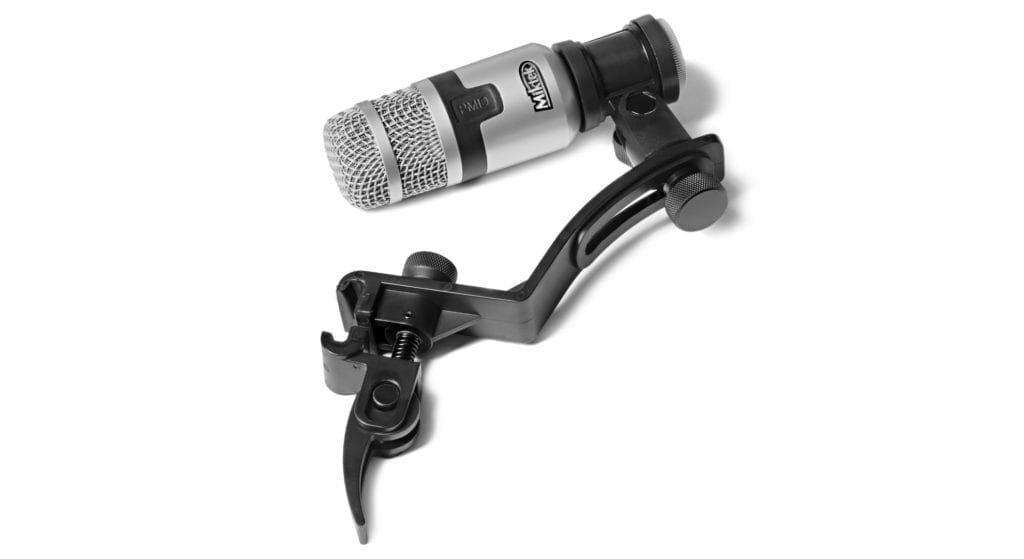
The Miktek PM10 is specifically designed to capture the transient of a drum.
This is the case with the Miktek PM10, a microphone optimized to capture the transients of drums. Sensitive enough to record the detail of a signal, while durable enough to bring on tour, the Miktek PM10 is slowly growing in popularity and is often found as a permanent fixture on toms, floor toms, and snares in many Nashville studios.
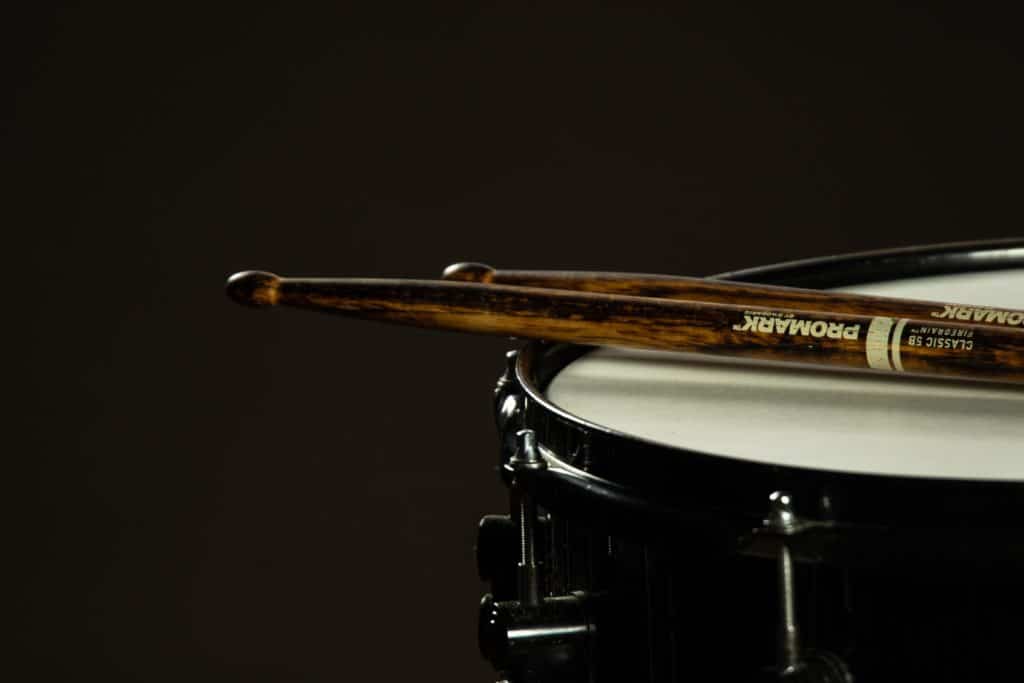
The PM10 is a step-up from the usual SM57 you see for drum close-mic applications.
Try it your snare, tom, cab, and even rock vocals to see for yourself why this microphone is on this list.
8. Neumann TLM 102 Large-diaphragm Condenser Microphone
Current Price - $699.00 USD
If you’ve ever wanted to own a Neumann but couldn’t justify dropping that kind of money on a microphone, the Neumann TLM 102 is what you’re looking for. A true workhorse, the TLM 102 sounds great on vocals, drums, brass instruments, acoustic guitars, and just about any source you want to capture with clarity and detail, but with a little of the tone Neumann is known for.
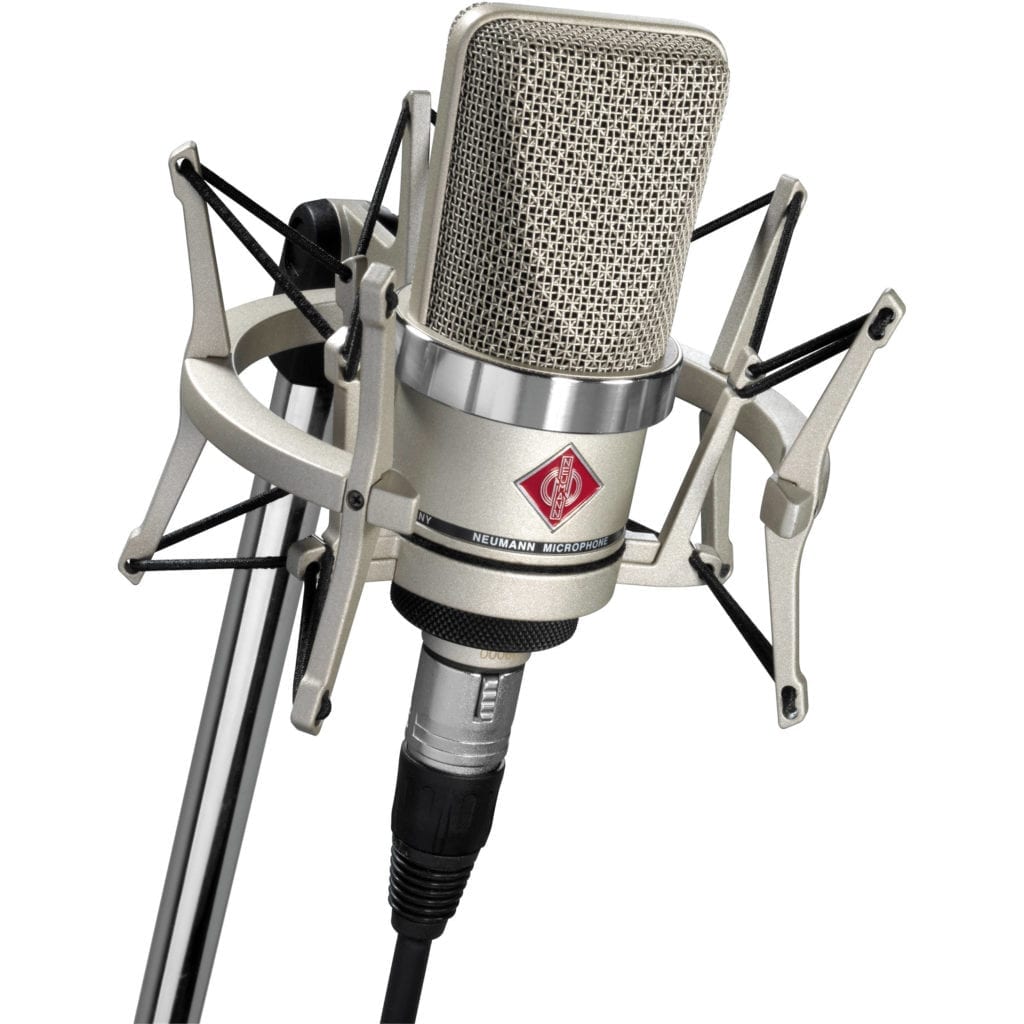
The TLM 102 offers Neumann build and sound quality, but at an affordable price.
Affectionally referred to as the ‘Baby Neumann’ the TLM 102 comes in at under half a pound, with a small, compact design. Despite its small size, it can handle an incredibly high SPL of 144dB making it capable of fulfilling almost the entire dynamic potential of any 24-bit recording (132dB dynamic range).
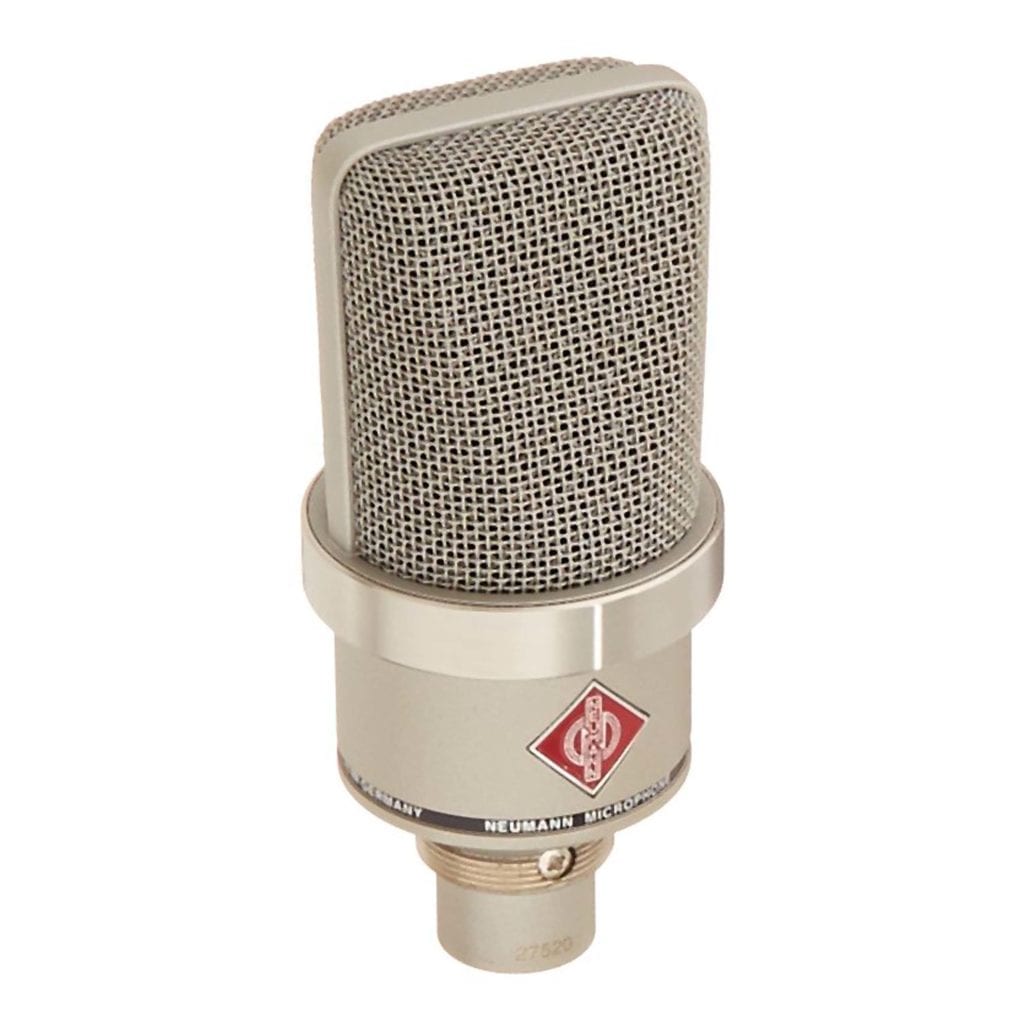
A low self-noise makes this microphone perfect for quieter sound-sources.
Additionally, the TLM 102 has a low self-noise of 12dB, making it a great option for quieter recordings - be that a quiet detailed vocal, or maybe a finger-picked acoustic guitar.
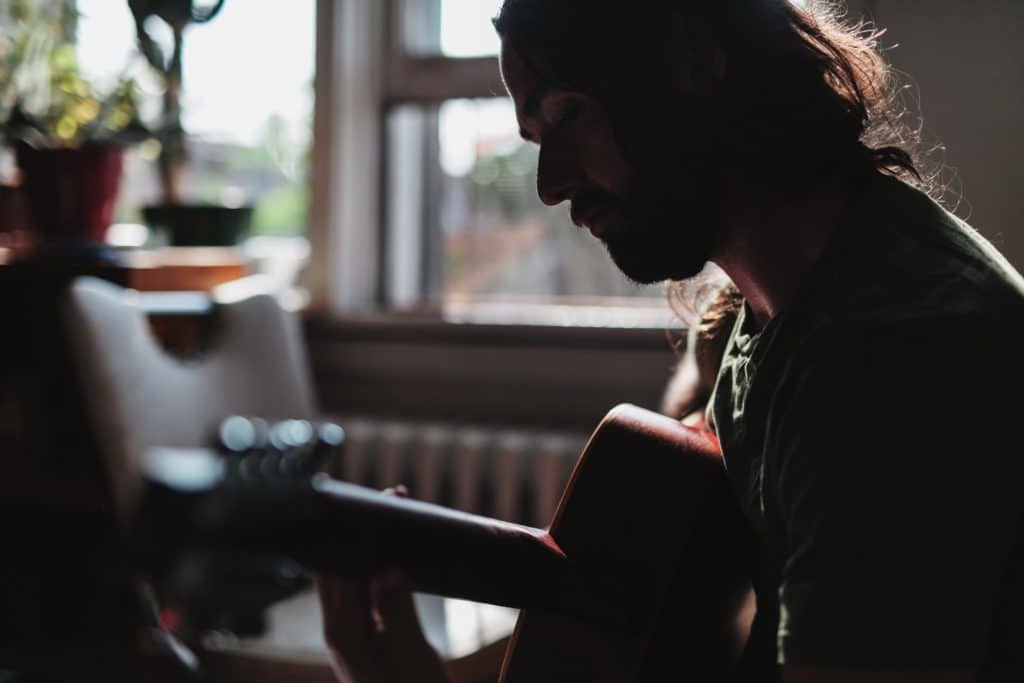
Try the Neumann TLM 102 on a soft acoustic, or maybe a mellow vocal.
If you’re curious about noise, and how it affects a recording, mix or master, check out our blog post that covers noise:
It illustrates what noise means to an audio signal, and why it's such an important concept to understand.
7. sE Electronics X1 A Large-diaphragm Condenser Microphone
Current Price - $99.00 USD
A high-quality condenser priced under $100 is a rare find. In fact, many may be inclined to believe that in this case, audio quality is being sacrificed for affordability; however, one listen to the sE X1 A and you’ll be sold.
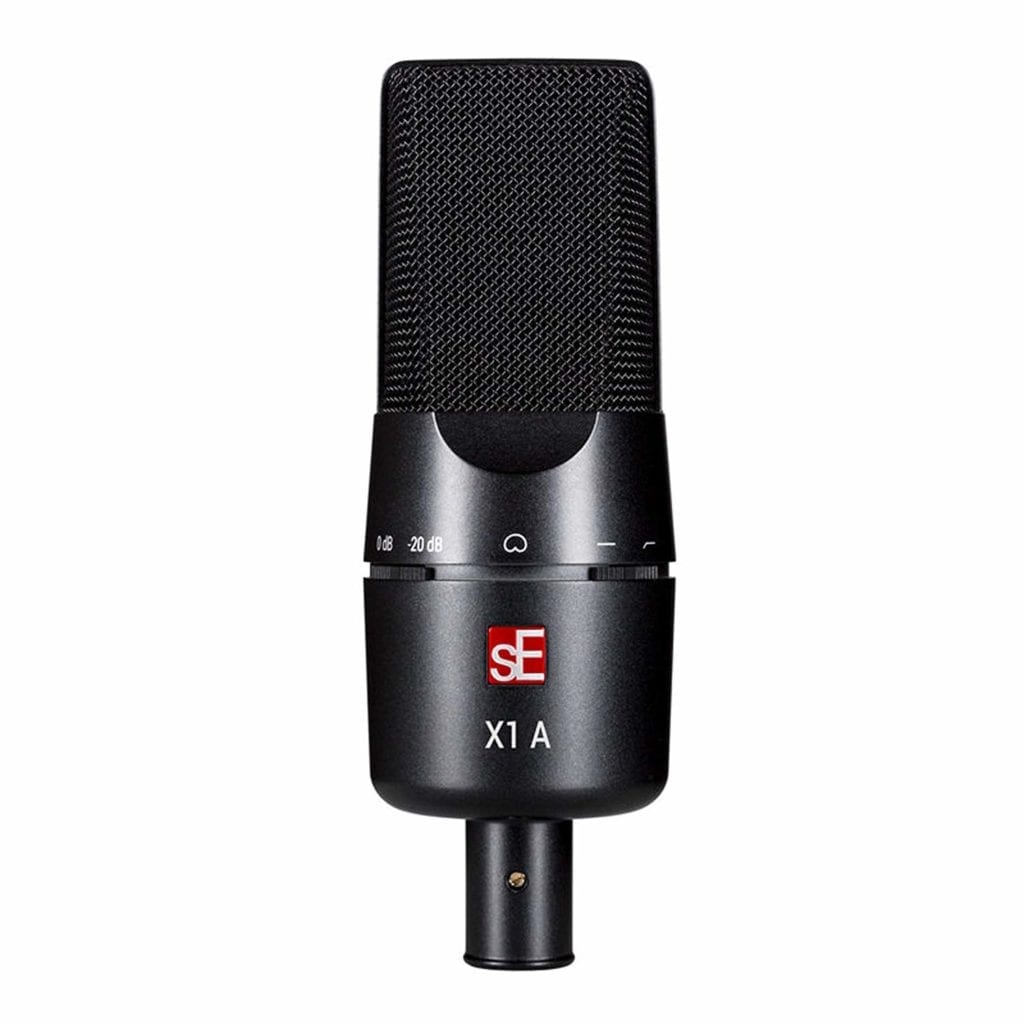
The sE X1 A is the most affordable microphone on this list.
Try a pair as drum overheads, or to create a stereo image with your acoustic. Place on in front of a guitar cabinet or on a drum head, using its -20dB pad to avoid clipping.
Or maybe try it out on a lead vocal, utilizing its 100Hz high pass filter to add some clarity and let the vocal cut through a complex mix. However you choose to use the sE Electronics X1 A, you’re guaranteed to be impressed by its value.
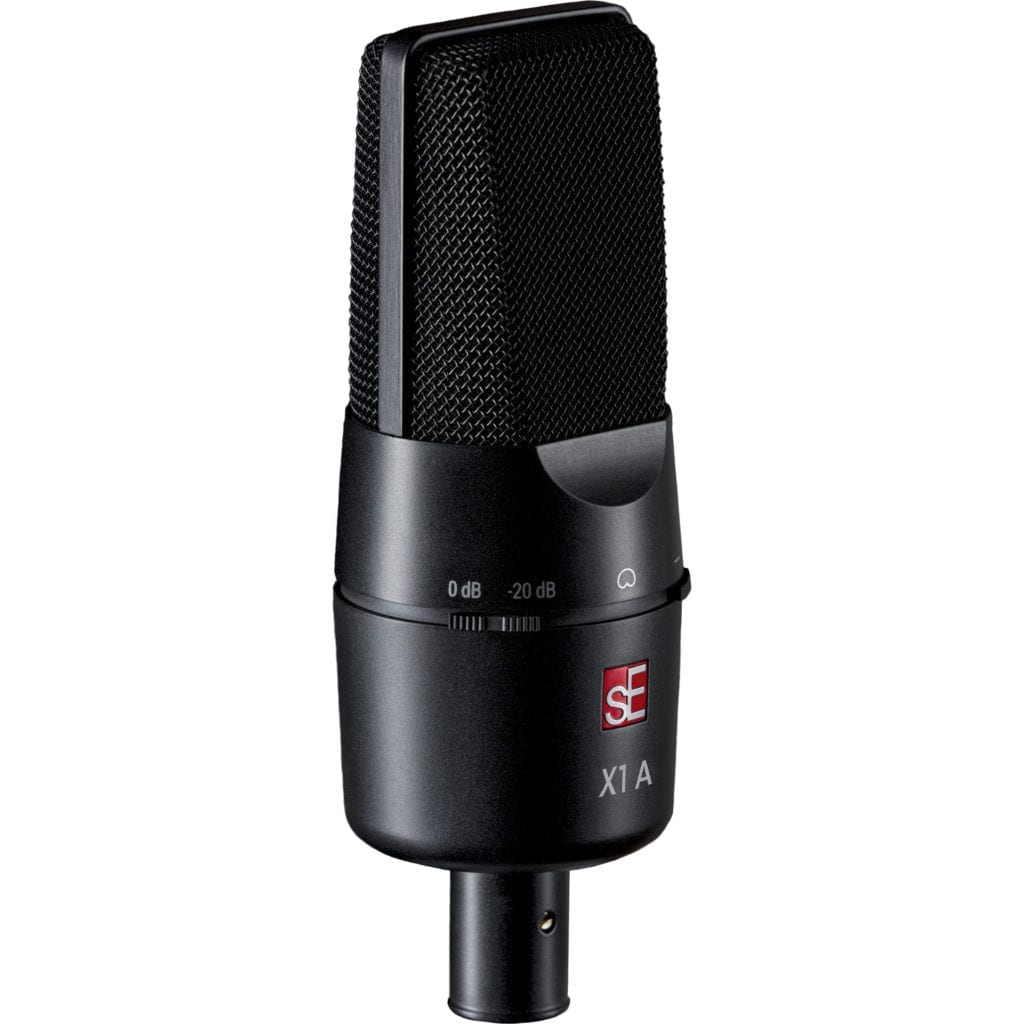
Its low price and versatility make it an amazing value.
A relatively low self-noise of 16dB makes it a good option for quieter sound sources, while its full 20Hz - 20kHz. frequency range makes it truly versatile.
6. Shure 545SD Dynamic Instrument Microphone
Current Price - $110.00 USD
We’ve all heard of the SM57, and for good reason - it’s an absolute classic utilized on countless hit recordings. However, its predecessor the Shure 545 is a lesser-known, but just as exemplary option.
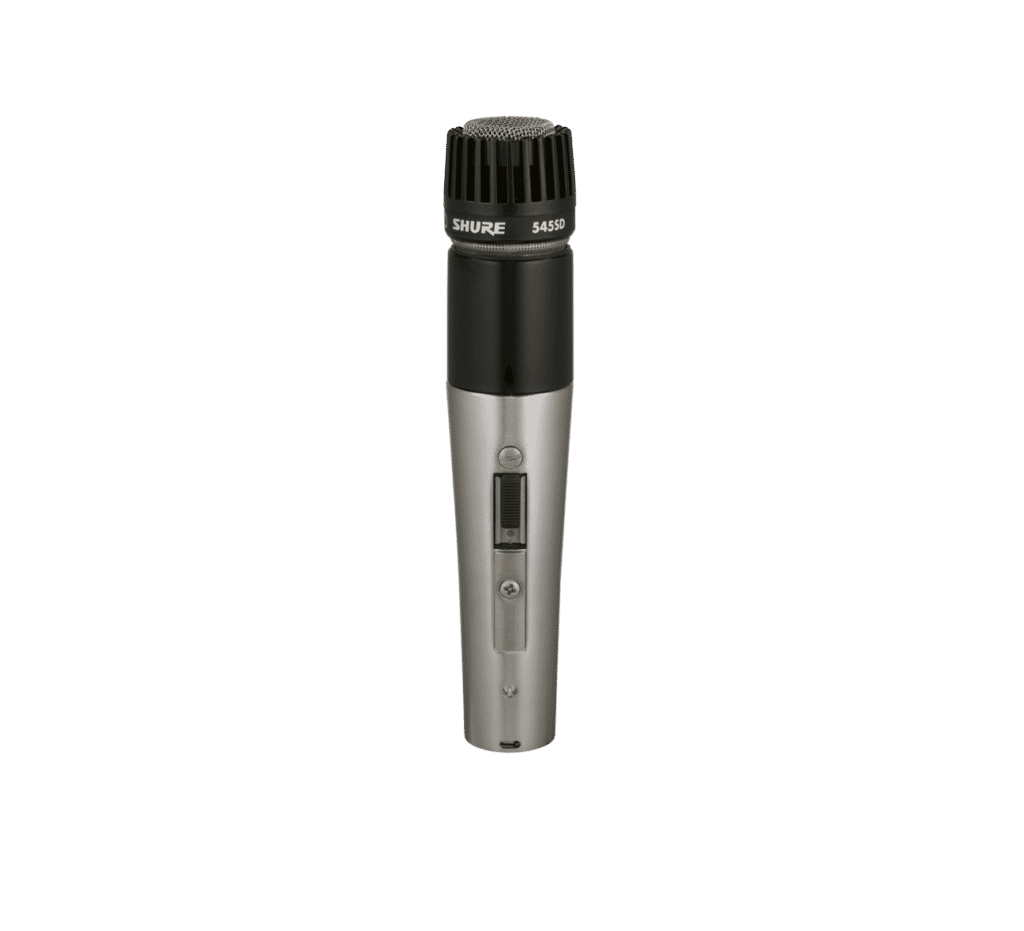
The Shure 545SD is a predecessor to the SM57.
With a slightly different frequency response than the 57, the 545 has a subtly unique tonality, giving the impression of a 57, but with something different. Just as versatile as a 57, you can throw the 545 on just about anything and capture the classic Shure sound.
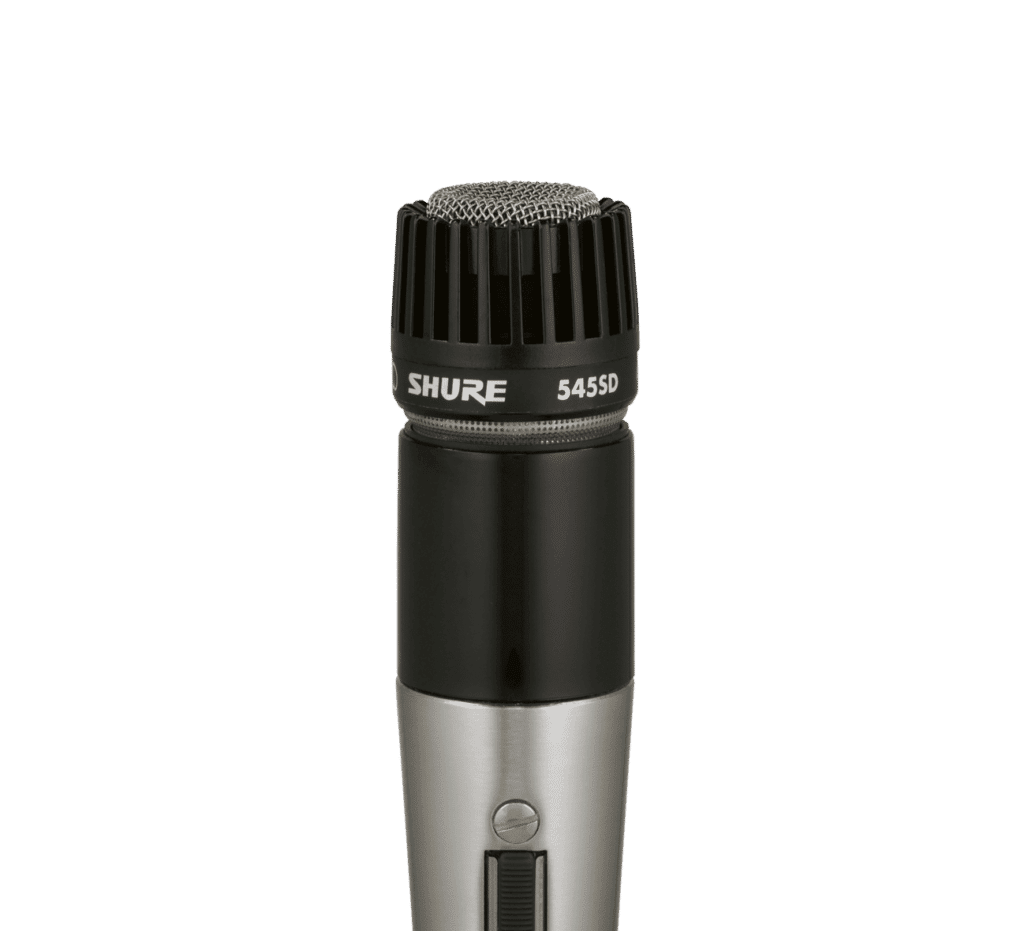
The killswitch adds a little extra flexibility for engineers.
Additionally, the Shure 545 implements a kill switch, giving engineers a little bit of extra flexibility during the recording process. If you like the SM57 but want to try something a little different, give the SM545 a try and see if it improves your recordings.
If you prefer your recordings to be unconventional, maybe lo fi or distributed on unique sounding mediums, here are a couple of blogs posts that may help you develop that unconventional sound:
Both of these blog posts show how to create new sounds using unique methods of processing and distribution.
5. Audio-Technica AT4050 Large-diaphragm Condenser Microphone
Current Price - $699.00 USD
Another large-diaphragm condenser that’s gained popularity as a true workhorse microphone, the AT4050 is an affordable solution for many engineers. Its flexibility means that one AT4050 can take the place of at least a few microphones.
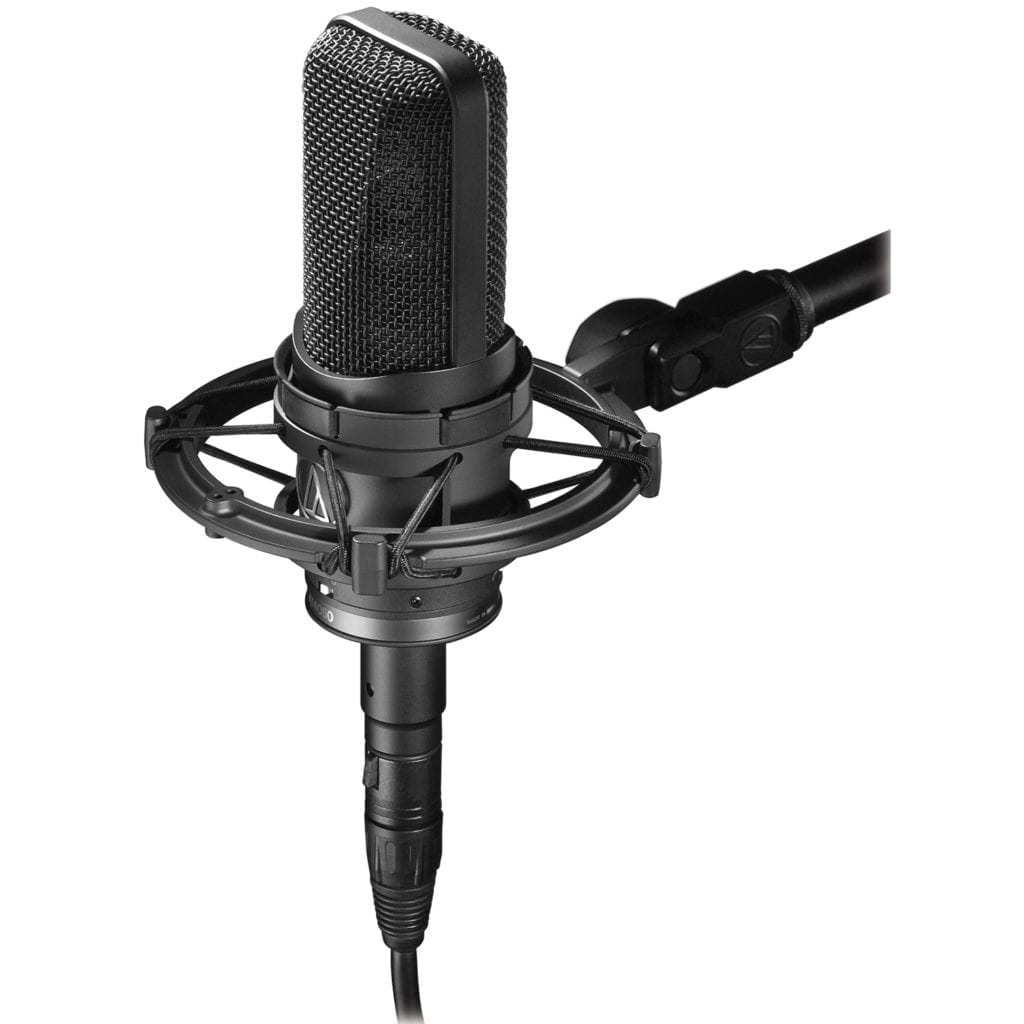
The AT4050 is versatile and of high enough quality to replace multiple microphones in a studio.
The main reason for its flexibility is its 3 polar-patterns, as it offers the traditional cardioid pattern, as well as figure-8 and omni. This makes it a great microphone for countless applications.
You can use it as an omni room mic, a cardioid vocal mic, or a figure-8 mic for mid-side capabilities. However you use the AT4050, you’ll be impressed with its build quality and its sonic quality.

The AT4050 has 3 polar patterns, making it capable of handling multiple recording configurations.
A 17dB self-noise makes it a good option for quieter sources, while the 149dB Max SPL and -10dB pad make it a viable option for incredibly loud sound sources. Lastly, its 20Hz - 18kHz frequency range means it can be used on any instrument to capture its full detail.
4. Lauten Audio LA-320 Large-diaphragm Tube Condenser Microphone
Current Price - $499.00 USD
Why care about tubes? What is it about a tube that makes a microphone or amplifier special? In short, tubes introduce pleasant low-order harmonics, making a sound source more complex, full and enjoyable.

Tube microphones add valuable and sonically pleasing harmonics to a signal.
The being said, a quality tube microphone is a good reason to be excited. The LA-320 delivers the sought-after tube sound without costing nearly as much as other tube microphones of a similar build and sound.
A full-frequency response makes the LA-320 a great microphone for any source - and if you don’t believe that feel free to watch Lauten Audio’s video in which the LA-320 is tested on virtually every instrument possible. You’ll no doubt be impressed by how well it captures various instruments and augments each performance.

The LA-320 sounds great on various instruments and vocal types.
If you want a warm and full sound that showcases an instrument well, while still retaining detail and clarity, the LA-320 is a great, affordable option.
If you would like to learn more about tubes, and how the harmonics they create affect a sound, check out our blog post on the topic:
It discussing various forms of distortion and shows how harmonics can be used to make an audio signal sound better.
3. Shure Beta 91A Condenser Boundary Microphone
Current Price - $239.00 USD
Boundary microphones don’t really get much attention - but what’s cooler than being able to put a microphone inside of an instrument? If you want to capture the acoustics of just the instrument, not the room, then a boundary microphone is your best bet.

Boundary microphones can be placed on walls to capture the ambient sound of an instrument, or inside the instrument to record only its acoustics.
The Shure Beta 91A is an affordable and incredible sounding boundary microphone, that offers a full frequency response with the ability to handle incredible high SPL. Although its self-noise is 29.5dB, odds are, if you’re recording an instrument from the inside, your sound source will be more than loud enough to cover that noise.
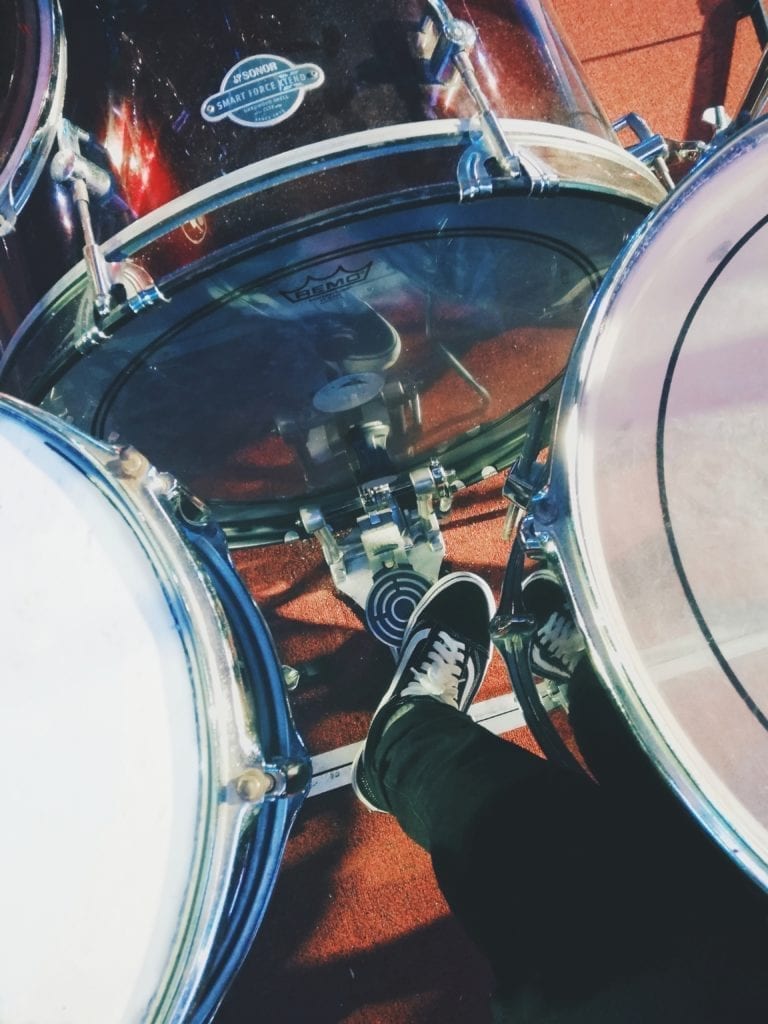
A high self-noise is offset or compensated for by the volume of the instrument.
The Shure Beta 91A is most often used as a kick mic, but try placing one inside your acoustic guitar to hear it in an entirely new way. If you’re looking to uniquely capture instruments in your studio, a boundary mic like the Beta 91A is a great option.
2. Neumann BCM 104 Cardioid Broadcast Microphone
Current Price - $1079.95
I know what you're thinking - $1080 isn’t affordable, and you’re right this is definitely on the higher price side. But the Neumann BCM 104 is an absolute steal for that price.
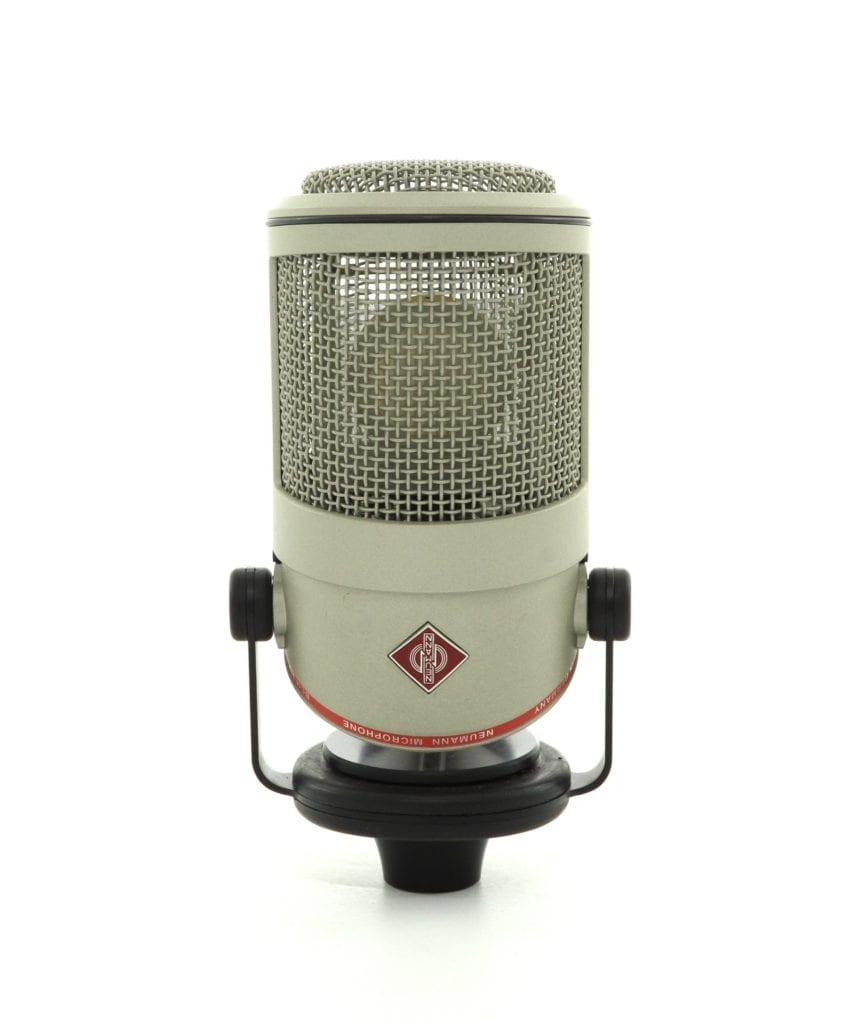
Although its the most expensive microphone on this list, the BCM 104 is still a steal at this price.
Originally designed as a broadcast microphone, the BCM 104 has quickly become a popular microphone amongst home studio owners and musicians alike. It’s build quality and top-of-the-line components make it an undeniably professional microphone.
It’s incredibly impressive 7dB of self-noise makes it the best option on this list for recording quiet sound sources. Additionally, its Max 138dB SPL and full frequency range make it capable of handling just about any instrument you throw at it.

Although it's designed for broadcast dialogue, the BCM 104 is suited for recording multiple instruments.
If you need an example of how this microphone sounds, simply watch any of our latest videos to hear how the BCM 104 performs on a dialogue recording. If you’re looking for a top-notch sounding Neumann microphone without having to spend $2000 or $3000, the BCM 104 is a perfect addition to your studio.
1. Shure SM81 Small-diaphragm Condenser Microphone
Current Price - $349.00
Once, I walked into a recording studio for a session, only to see a drum-kit, bass cab, guitar amp, and vocal booth all set up with SM81 microphones. Naturally, I thought one of the engineers must have a somewhat unhealthy obsession - it turns out I was right but now I completely understand why.

The SM81 sounds good on just about any sound source.
It seems like you just can’t go wrong with the SM81. Unlike other small-diaphragm microphones, the SM81 works on just about any instrument you put it on.
Maybe it’s its almost completely flat frequency response or the low 16dB self-noise, or maybe it’s its full 20Hz - 20kHz frequency range, but the SM81 is an undeniably fantastic sounding microphone.
Its affordable price means you can pick up a pair for drum overheads, or maybe a pair for piano or acoustic guitar. There’s also the option of buying 3 or 4 of them - its really up to you of course.

Purchasing a pair is a great idea for any home or professional studio.
The popularity and durability of the SM81 means you can pick up a used one for cheap, and know that it's going to continue working properly for years to come. Right now you can pick up a pair of used SM81’s for $400, given you don’t mind the beat-up cosmetic condition.
High-pass filters of 18dB per octave at 80Hz. and 6dB per octave at 100Hz. means extra versatility when recording. A -10dB pad and high max SPL make it great for guitar amps, drums, rock vocals, or any other source that could potentially distort or damage other microphones.
If you’re looking for a microphone that can do just about anything in your studio and is affordable enough to purchase a pair, the SM81 is a classic that will serve your studio well.
In short, the SM81 is a durable, affordable, versatile, flexible, classic sonically decadent microphone that when paired with a good preamp, can’t be beat.
Try one for yourself and see why it’s such a popular, go-to choice for so many engineers.
Honorable Mentions:
- Rode NT1-A Large-diaphragm Condenser Microphone
- Warm Audio WA-87 Black Large-diaphragm Condenser Microphone
- Audio-Technica AT2035 Large-Diaphragm Condenser Microphone
- Shure SM7B Cardioid Dynamic Vocal Microphone
- Sennheiser e 609 Silver Dynamic Supercardioid Guitar Microphone
So that’s our list of the Top 10 Affordable Studio Microphones, but what do you think? Is there a microphone you love but didn’t see here?
Conclusion
A great studio microphone is one that can be used on countless applications and with exceptional results. If that microphone is affordable, then all the better. Each of the microphones listed above provides the quality you need to create something great.
Although microphones are an important part of the recording process, keep in mind that many other factors come into play - like your preamp, your microphone placement, your analog to digital conversion, the performance being recorded, and of course, the ingenuity of the engineer.
With that in mind, no matter how good your gear is, the most important part of recording is knowing how to record properly, and staying creative and excited about your craft. If you find most of these microphones to be too expensive for your budget - don’t be discouraged.
Even the most entry-level microphone can result in amazing sounds - with the right mindset, a great recording is only waiting to be made.
If you’d like to hear one of your mixes mastered, send it to us here:
We’ll master it for you and send you a free mastered sample for you to review.
What is your favorite studio microphone?




